The Cannondale Jekyll is a bike with a long history. In 2013, Jerome Clementz was the first rider ever to win the Enduro World Series, and he did it on a Jekyll. Since that podium glory, the bike has been fundamentally revised. The former pull-shock has disappeared altogether, but the Jekyll remains full of peculiarities.
For an overview of the test fleet head to the group test: The Crème de la Crème – Nine high-end enduro bikes of 2018 in comparison
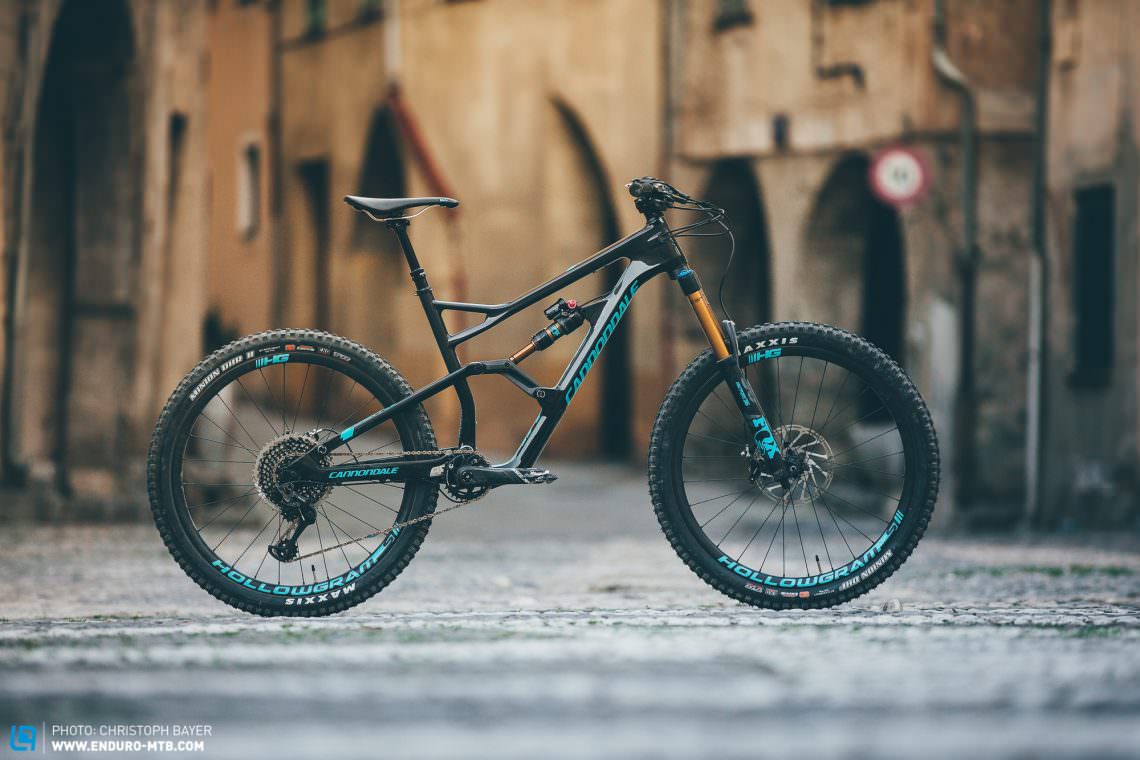
170/165 mm (f/r) | 13.30 kg | € 7,499
Admittedly, it’s not love at first sight with the Jekyll: the big empty space under the rocker and the position of the shock looks unbalanced. However, the design principle here is one of form following function, and once you find yourself reaching for the bottle on a climb, you will be thanking Cannondale. The clever details on the Jekyll don’t end there. Cannondale opted for an asymmetric 148 mm rear triangle, moving the drive-side six millimetres to the right instead of just three, allowing for stiffer, symmetrically tensioned rear wheels, as well as super-short chainstays (420 mm). At the front, the Jekyll has a whopping 170 mm of travel. At the rear, there is an option of either 165 mm or 130 mm of travel, selected via a remote lever on the handle bar that controls the specially-developed Gemini shock. The components of the € 7,499 bike are beyond reproach, giving us no reasons for complaints.
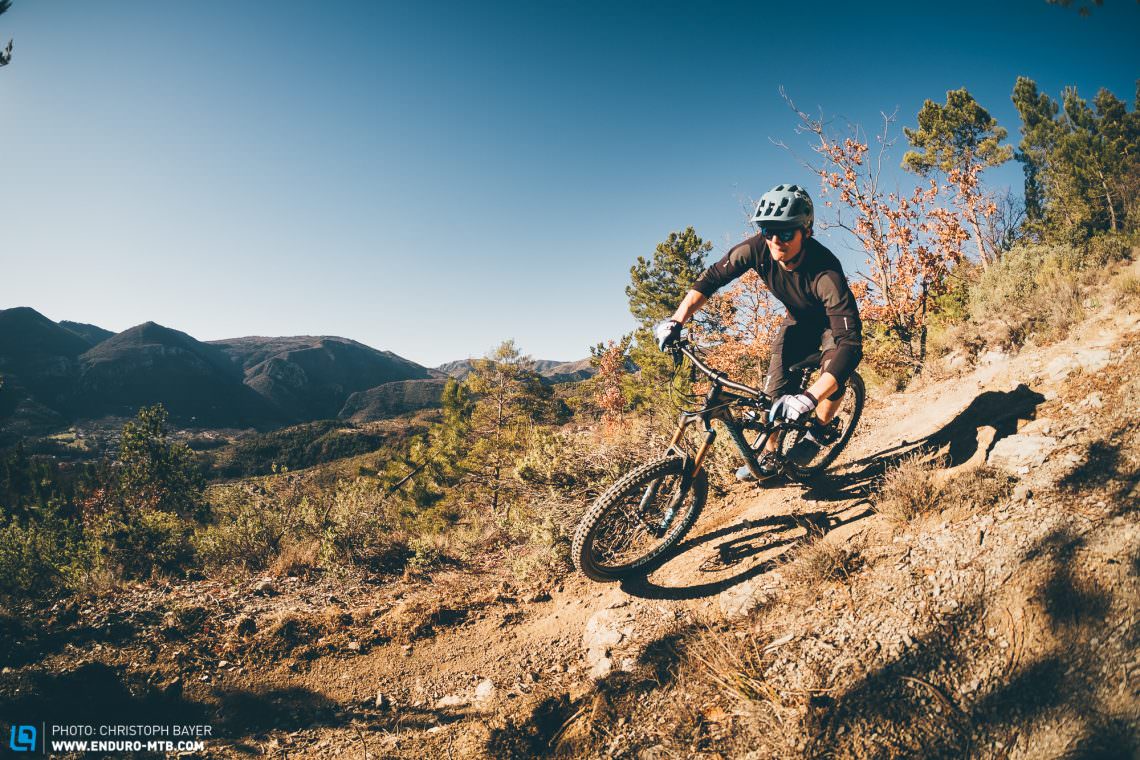
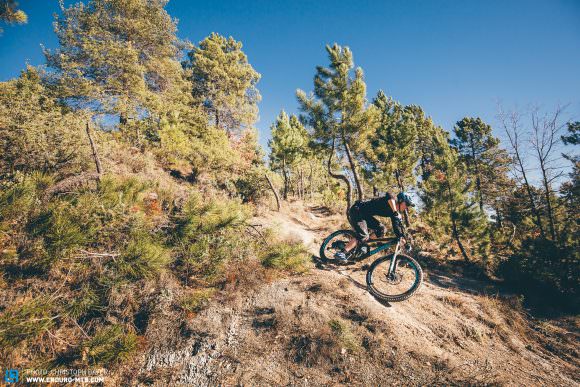
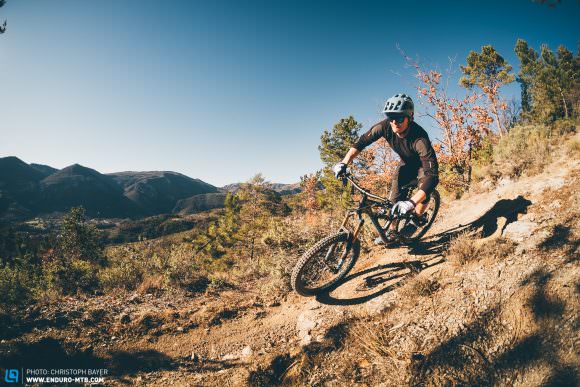
The agile handling will leave you with a smile on your face, but at the cost of composure at speed.
The special feature of the Jekyll’s Gemini shock is that the suspension travel in Hustle mode is shortened by reducing the shock’s air volume. Thus the travel and sag are reduced without affecting sensitivity. As a result, the rear end remains very supple, but with less travel. This provides uphill traction, and weighing in at only 13.30 kg, the Jekyll climbs willingly. According to Cannondale, the travel adjustment can also be used on flowy downhill trails without problems, though we didn’t try it ourselves. The suspension of the Jekyll responds sensitively over smaller stuff and uses the travel effectively on larger impacts without feeling undefined or wallowy. In corners, the Jekyll’s playful side comes out, changing direction quickly and directly. However, that short rear end means that the bike demands a very active riding style to maintain enough grip on the front wheel. When the trail gets rough and fast, the Jekyll can’t quite keep up with the competition in this test – it remains easy to control, but not as composed.
The Cannondale Jekyll 1 in detail
Fork FOX 36 FLOAT Factory 170 mm
Rear shock FOX FLOAT X Gemini Factory 165,130 mm
Brakes SRAM Guide RSC 200/180 mm
Drivetrain SRAM X01 Eagle
Seatpost Race Face Turbine 150 mm
Stem Cannondale C1 35 mm
Handlebar Cannondale C1 Carbon Riser 780 mm
Tires MAXXIS Minion DHF 2.5″ / DHR II 2.4″
Wheelset Cannondale HollowGram 30 Carbon
Weight 13.30 kg
Price € 7,499
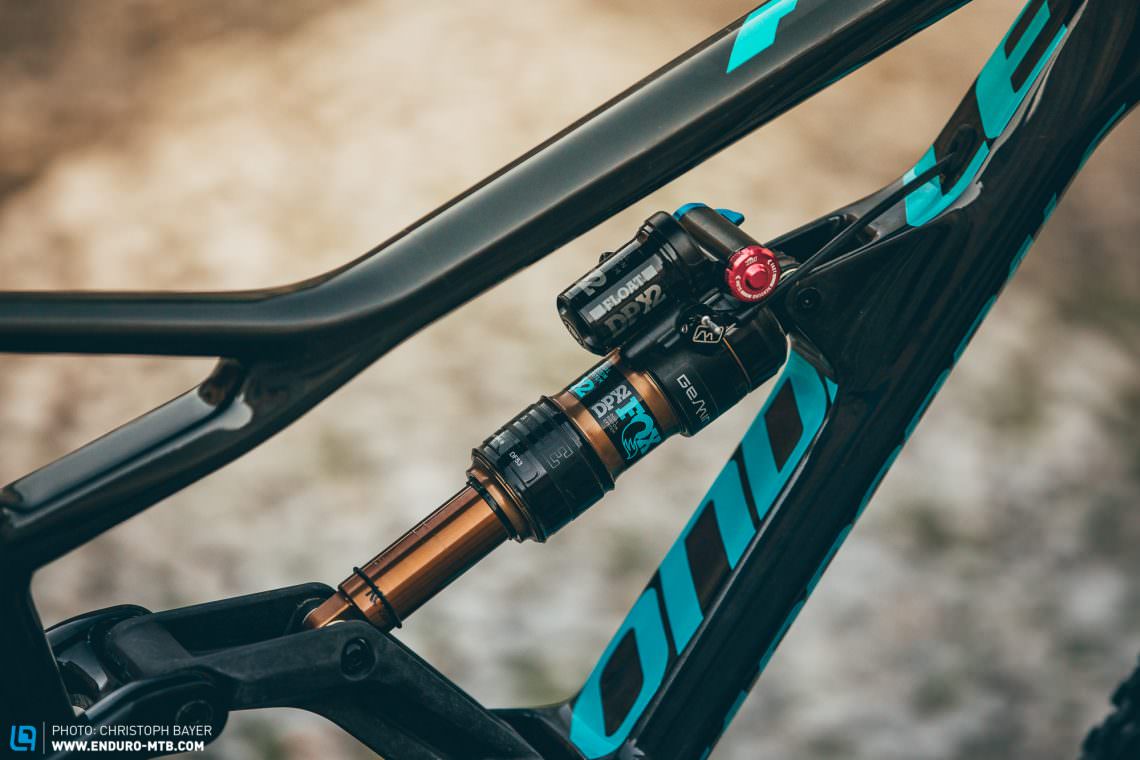
The FOX Gemini shock is based on a FLOAT X in which the volume of the air chamber can be reduced via a remote lever. The rider can choose between the Hustle mode with 130 mm of travel or the Flow mode with 165 mm. We used Hustle mode only for climbing.

Underneath the rocker link, the Jekyll offers space for a 650-ml water bottle. Aesthetically, however, it takes some getting used to.

The carbon wheels of the Jekyll are very stiff and give the bike direct and precise handling. On longer runs, however, their unforgiving nature can be exhausting.
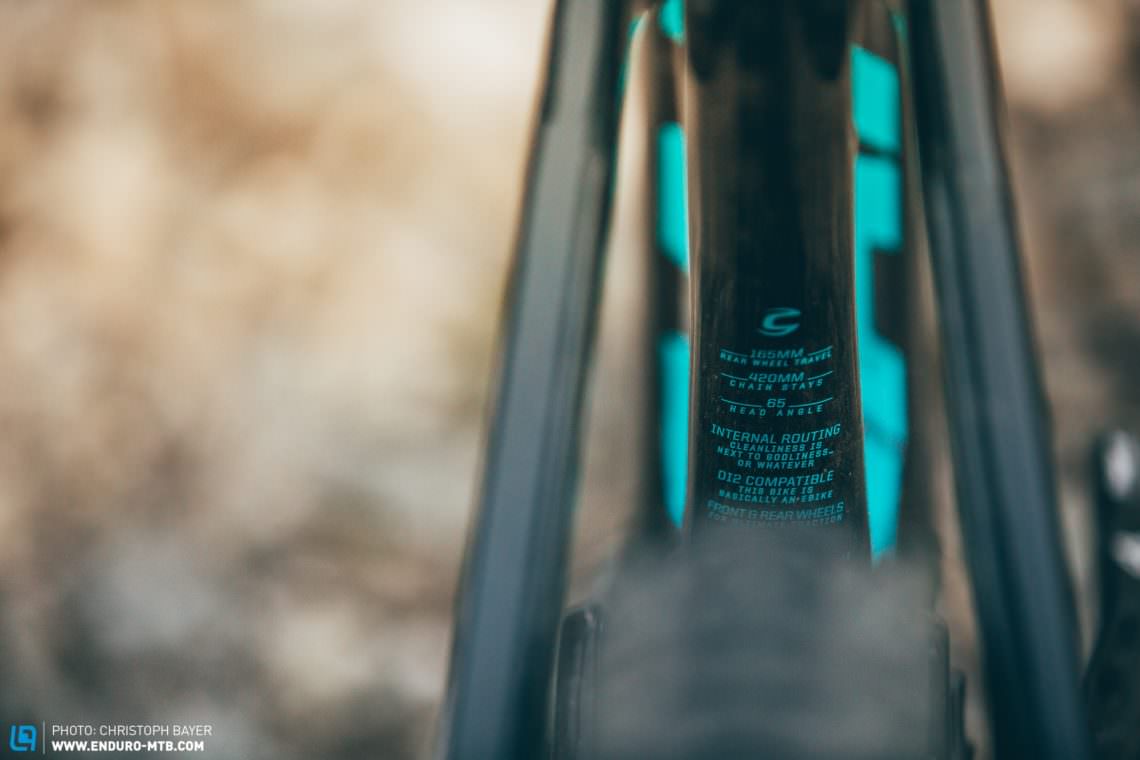
Cannondale prints the most important geometry data on the seat tube. The handling of the Jekyll is defined by its super-short 420 mm chainstays. They make the bike very agile, but also require an active riding style.
The geometry of the Cannondale Jekyll
| Size | S | M | L | XL |
|---|---|---|---|---|
| Seat tube | 400 mm | 430 mm | 460 mm | 520 mm |
| Top tube | 584 mm | 609 mm | 634 mm | 662 mm |
| Head tube | 102 mm | 115 mm | 127 mm | 140 mm |
| Head angle | 65° | 65° | 65° | 65° |
| Seat angle | 75° | 75° | 75° | 75° |
| Chainstays | 42 mm | 42 mm | 42 mm | 42 mm |
| BB High | 34.9 mm | 34.9 mm | 34.9 mm | 34.9 mm |
| Wheelbase | 1166 mm | 1193 mm | 1220 mm | 1250 mm |
| Reach | 426 mm | 448 mm | 470 mm | 495 mm |
| Stack | 590 mm | 601 mm | 612 mm | 624 mm |
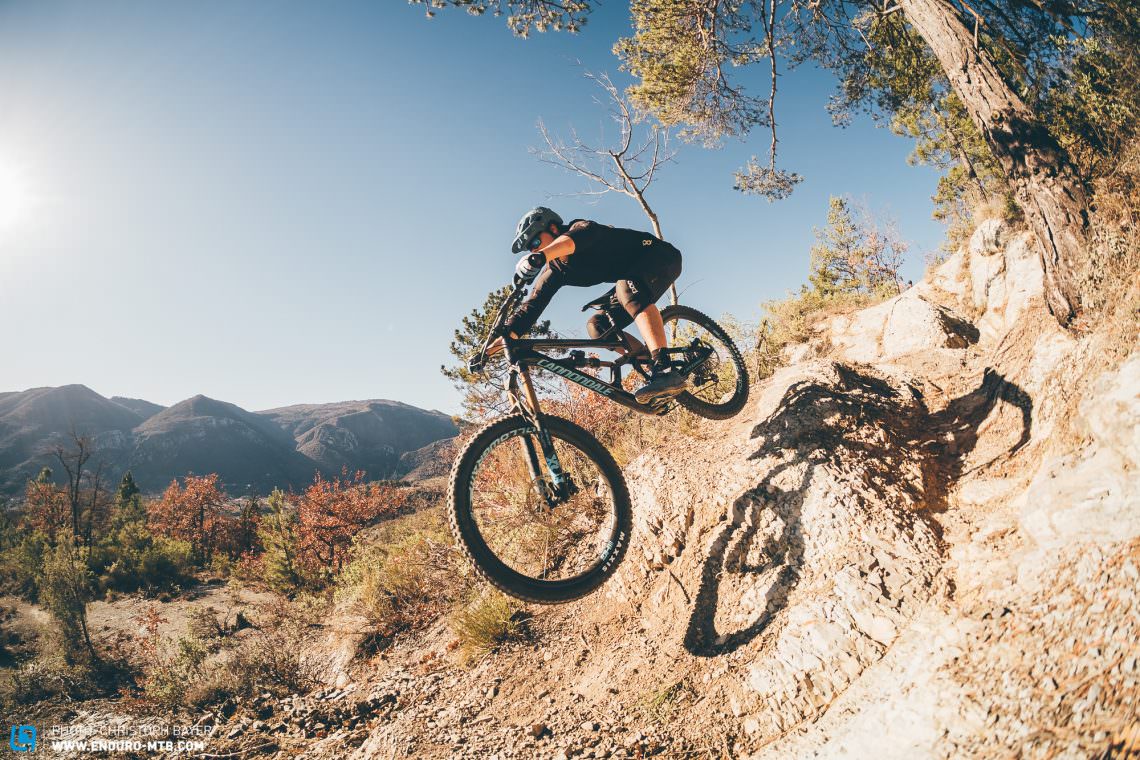
Conclusion
Despite a generous 170 mm of travel, the Cannondale Jekyll is more like a trail bike with lots of reserves rather than a full-on enduro bike. If you are looking for an agile bike that climbs well and is lots of fun to ride, this is it. In demanding terrain and at high speed, however, the competition leaves the Jekyll in its wake.
Strengths
+ climbs efficiently
+ agile, playful handling
+ great rear linkage
Weaknesses
– requires an active riding style
– nervous at higher speeds
Uphill
Downhill
Stability
Agility
Value for money
For more info head to: cannondale.com
The test fleet
For an overview of the test fleet head to the group test: The Crème de la Crème – Nine high-end enduro bikes of 2018 in comparison
All bikes in test: Canyon Strive CF 9.0 | Evil The Wreckoning X01 | Kona Process 153 CR 27,5 | Merida ONE-SIXTY 8000 | Orbea Rallon M-Team | Santa Cruz Nomad 4 CC XX1 | Specialized Enduro 29 Pro | Trek Slash 9.8
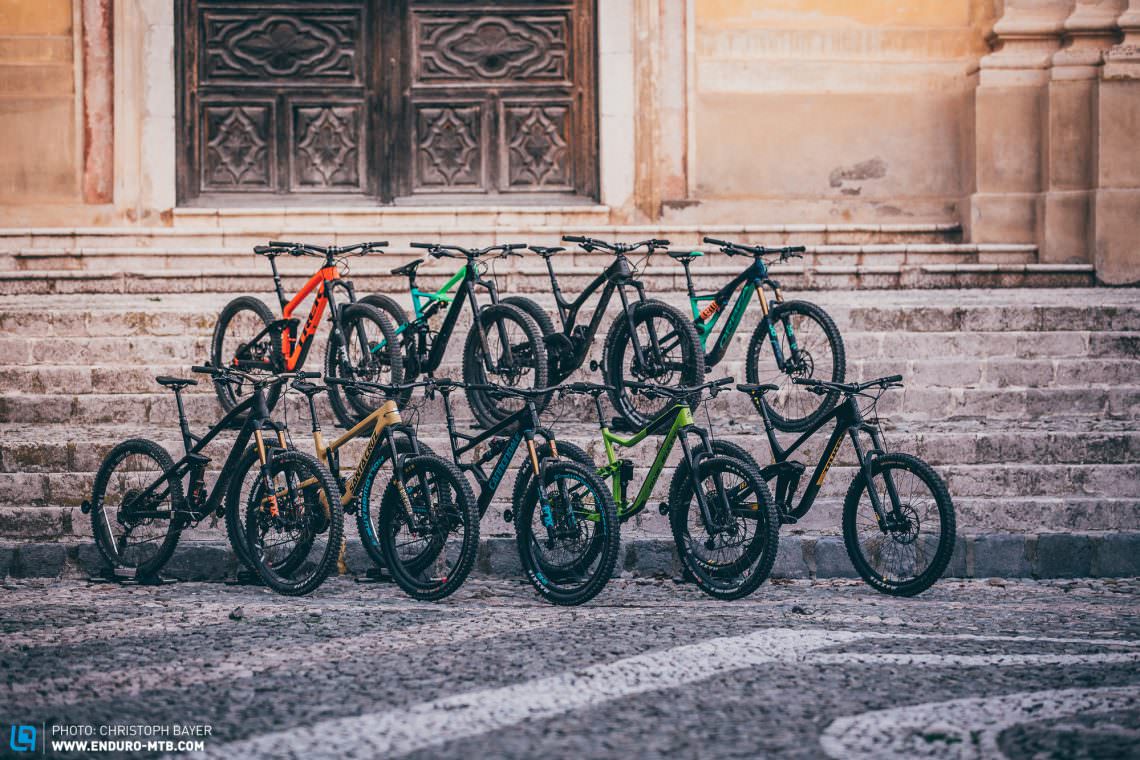
This article is from ENDURO issue #032
ENDURO Mountainbike Magazine is published in a digital app format in both English and German. Download the app for iOS or Android to read all articles on your tablet or smartphone. 100% free!

Did you enjoy this article? If so, we would be stoked if you decide to support us with a monthly contribution. By becoming a supporter of ENDURO, you will help secure a sustainable future for high-quality mountain bike journalism. Click here to learn more.
Words: Photos: Christoph Bayer, Valentin Rühl











